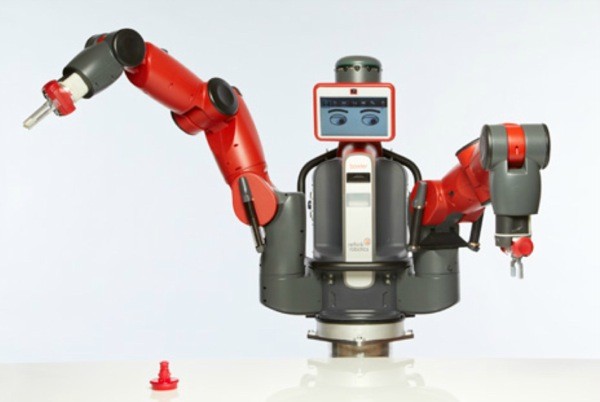
Created as the brainchild of a living legend in the robotics world Rodney Brooks, Baxter is the next generation of industrial robots. At six feet tall and 300 pounds, the machine is capable of expressing what it is doing thanks to a screen that serves as its face. A digital pair of eyes is capable of looking concerned when the machine makes a mistake, looks down when working on a task and even looks towards its next task when it has finished its current one.
Baxter is a boon in the world of industrial robots thanks in larger part to the fact that it is capable of excelling in several areas that deter many from investing in current industrial robots. Some of these areas include the high programming costs as well as the inability to adapt and use common sense. On top of this the large hulking machines are considered dangerous and volatile enough that they are separated from other line workers with cages.
In contrast to these types of machines, Baxter is capable of learning new tasks in short order and intuitively enough that anyone without a robotics degree can do it easily. A new object can be introduced to Baxter by displaying the object in front of one of the robots cameras which are located in the head, chest as well as the tip of each arm. The specific movements and actions that are required can be taught by moving Baxter’s arms in the exact sequence desired while also selecting from a dial of pre-programmed actions.
It seems as if Brooks and his team at Rethink Robotics, have thought of absolutely everything to make the robot as safe to work with as possible for fellow employees on the manufacturing floor. Baxter comes equipped with sonar sensors all over its head as well as the integrated technology that allows its motors to sense touch and respond by reducing its force and speed instantly. This makes Baxter both easy to manipulate and safe.
Baxter is currently being tested on the production lines of Vanguard Plastics, a Conneticut based manufacturer. According to company sources, almost anyone is capable of programming the robot and fail to see it as a threat to take their jobs. The latter may be the most important aspect of Baxter’s potential success as Baxter was created to work with employees to make manufacturing as cost effective and efficient as possible. This could allow a plethora of North American and European companies in fields ranging from mobile devices, automobiles and pharmaceuticals to remain competitive with Asian manufacturers who benefit from low labour costs.
Costing $22,000 each to make, Baxter would give companies a better robot than anything on the market at a fraction of the cost while also increasing flexibility as Baxter can literally be taught a multitude of tasks. Check out the video of the next generation of robot below.
SOURCE: Technology Review
PHOTO: Engadget